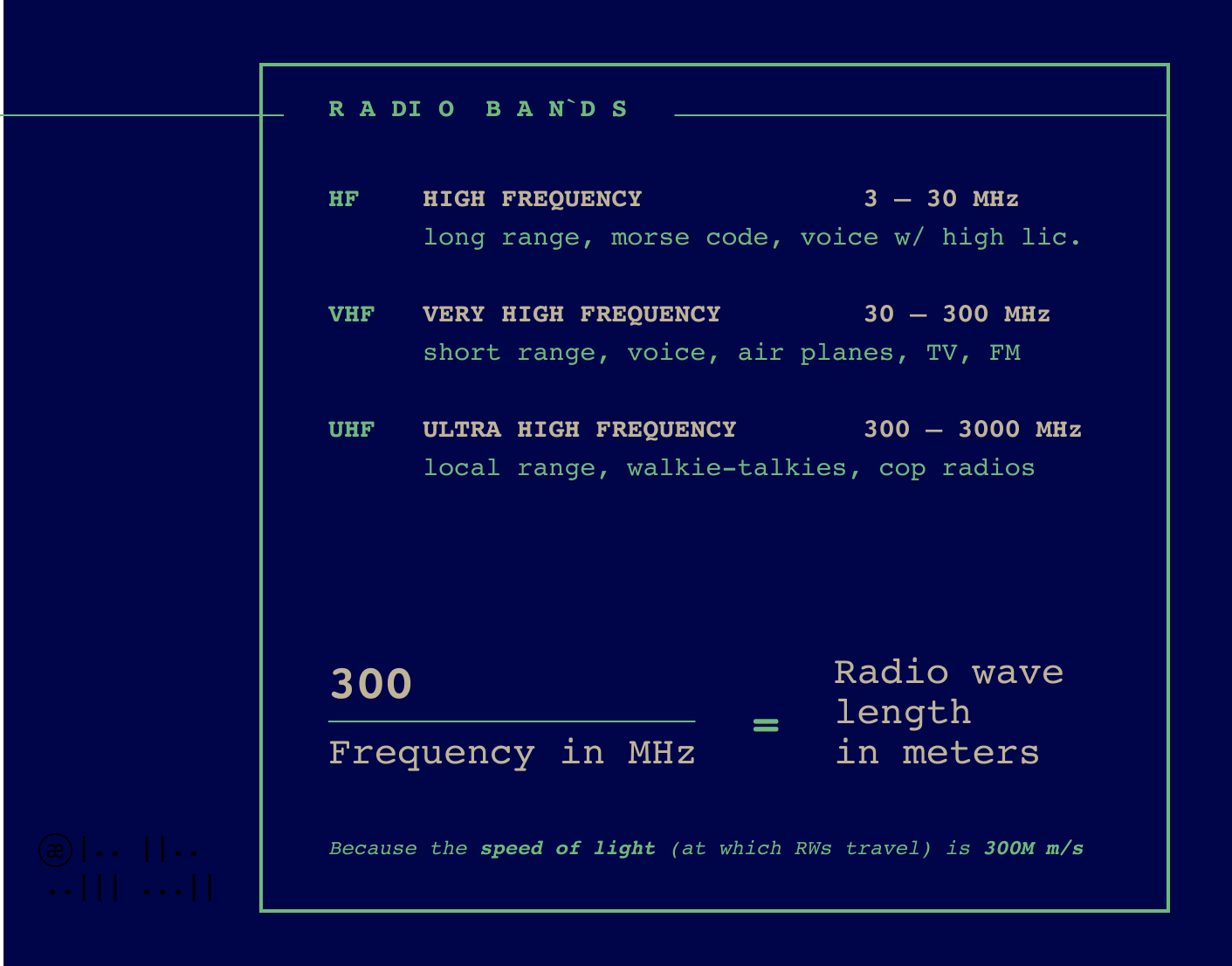
<< radio home
<< index
by disinfoniacs #69 & #1
>>>>
You are probably familiar with the electromagnetic spectrum which includes everything from Gamma rays (300Ehz) and X-Rays (~3EHz), to visible light (~300THz), to radiant heat (far infrared ~20THz-300GHz), microwaves, and radio waves (<300GHZ). Radio comprises the longest wavelengths of this spectrum.
Radio waves, unleashed into the ether by a transmitter and antenna, travel at the speed of light, a blistering 300 million meters per second, through the vacuum of free space. The backbone of these radio waves are the electric and magnetic fields, intricately intertwined in a dance of right angles to eachother.

Polarization, the orientation of a radio wave's electric field, is a key concept in the realm of radio waves. Each wave boasts a unique polarization, shaped by the type and configuration of the antenna.
There are many types of polarization, but for the sake of the license test, we'll focus on horizontal vs vertical—two types of linear polarization.
A horizontally polarized antenna, parallel to the ground, is commonly utilized for long-distance communications via weak-signal CW (morse code) and SSB (single sideband voice) using VHF and UHF bands.
A vertically polarized antenna is favored for applications like FM repeaters and simplex transmissions.
As a general rule, aligning the orientations of both antennas is crucial for optimal performance. The receiving antenna should be positioned to minimize polarization mismatch with the transmitting antenna for optimal reception, even though perfect alignment is not always necessary. And while the transmitting antenna primarily dictates the polarization of a radio wave, its orientation can undergo drastic shifts upon reflection off environmental obstacles like walls and floors so you can never be entirely sure how a signal will arrive.
Now that the inner workings of radio waves have been uncovered, let's delve into wavelength and frequency - two closely related concepts.
Wavelength is the distance traversed by a radio wave during a single cycle. Frequency is the number of oscillations per unit time. These two features are inversely proportional. Wavelength gets shorter as the frequency increases.

In the realm of amateur radio, you will encounter references to both wavelength, such as “10 meters,” and frequency, like “28.5 megahertz.” One can compute wavelength using this formula: Wavelength in meters = 300 / frequency in megahertz. Applying this to 28.5 MHz yields a wavelength of around 10.5 meters, placing it within the 10-meter band.
To navigate the frequency spectrum, ham radio operators often rely on approximate wavelength to identify different bands. For instance, the widely used 2-meter simplex frequency of 146.52 MHz, when plugged into the formula, falls within the 2-meter band. As a general rule, wavelengths give you operating ranges and frequencies give you specific things to tune to.

The wavelength or frequency of radio waves wields a significant influence on the reach of your signal and compliance with regulations.
Ham radio operators primarily utilize three major frequency ranges, namely High Frequency (HF), spanning 3 to 30 MHz, Very High Frequency (VHF) between 30 to 300 MHz, and Ultra High Frequency (UHF) from 300 to 3000 MHz.
<< previous lesson | next lesson >>
---
<< radio home
<< index
